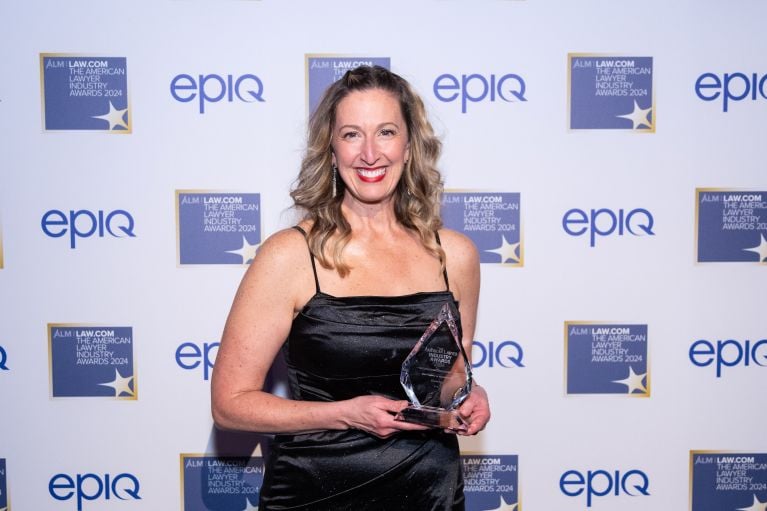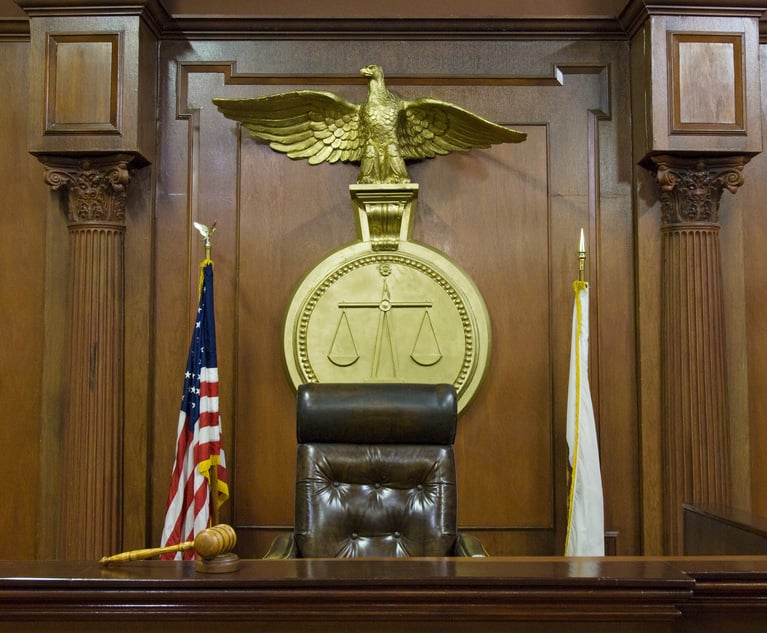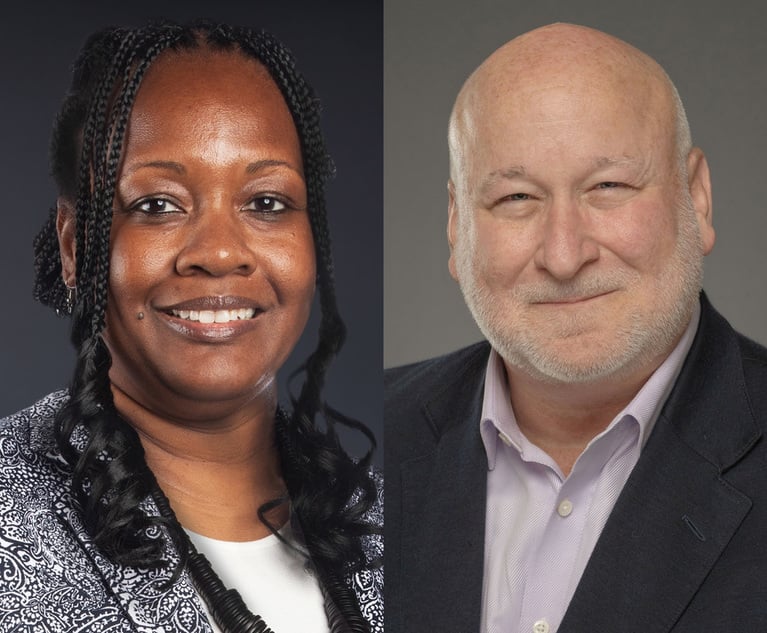Ponzi Redux
Madoff scandal reveals the continuing risk of falling victim to an age-old swindle.
February 28, 2009 at 07:00 PM
6 minute read
Charles Ponzi didn't invent the pyramid scheme that bears his name; he just made it famous. His sensational swindle started as a form of arbitrage involving international postage coupons promising extremely high returns. But Ponzi merely paid off one wave of investors with money from the next. Over just six months in 1920, he took in $15 million before the pyramid collapsed.
Adjusted for inflation, Ponzi's total would be about $160 million today. Not chump change, to be sure, but a paltry sum compared to Bernard Madoff's $50 billion charade that left charitable institutions, pension funds, banks and wealthy investors reeling. There may be a case for renaming this particular scam.
Ponzi schemes are always a part of the landscape–though they tend to be exposed during economic downturns when investors want to withdraw their funds–and they present perpetual risk for corporate counsel. Financial companies must be constantly vigilant about rogue traders looking to cover losses, and corporate investors must be careful about where they park their pension funds.
“It's a blind spot in most companies,” says Michael Mayer, vice president of CRA International and a financial investigations expert. “Given the current circumstances it would behoove a general counsel to ask their finance team for a general overview of the company's investments. Get the finance team's opinions on what the outliers are in terms of risk.”
Modern Ponzis
Unlike the scheme's audacious namesake, most contemporary Ponzi artists don't set out to orchestrate a fraud. They slip into it out of desperation.
“People embark on some investment thinking they're going to be successful,” says Bennett Falk, a partner at Bressler, Amery & Ross who handled litigation stemming from the 2005 Bayou Hedge Fund collapse. “Then they run into some losses and borrow from Peter to pay Paul. When they don't make it back the next month they have to borrow from two more Peters to pay two more Pauls, and it just grows.”
The other modern variation is rate of return. Ponzi promised a 50 percent profit in 45 days. Contemporary schemes fly under the radar by providing conservative but consistent returns. Madoff, for example, reportedly promised 10 to 12 percent returns–enough to attract investors but not enough to raise questions.
“People aren't suspicious. They just think this is brilliant management,” says Cynthia Monaco, a shareholder at Buchanan Ingersoll & Rooney. “It's always 8 percent,
10 percent. It looks reasonable. But if you scratch the surface, there's no way to make this kind of money with the small staff they have or the amount they are investing. If you ask a few questions, it falls apart.”
The problem is, no one is asking the right questions.
“In all these cases, the charisma and credibility of the perpetrator is usually pretty high,” Mayer says. “That tends to mask the other things. People get comfortable because somebody looks them in the face and says, 'Here is the answer to your question.' It seems plausible.”
Hub and Spoke
That plausibility evaporates when the market turns and investors look to cash out, as happened last year.
“The market downturn is really driving a lot of this being uncovered,” Mayer says. “The rocks surface as the tide goes out.”
That's not to say the fraudsters don't do their best to fight the tide. Monaco prosecuted two Ponzi schemes as an assistant U.S. attorney in Brooklyn, including the $100 million Evergreen spot trading fraud uncovered in the aftermath of Sept. 11. In both cases one of the co-conspirators suggested trying to get out of the scheme by making up trading losses.
“You're already booking false trading profits, why not book a false trading loss and then tell your investors that you lost their money?” Monaco says. “It's sort of like the plot of The Producers.”
Perpetrators rely on compartmentalization–what Monaco calls a classic hub-and-spoke conspiracy. Many players may be involved in individual acts of deception, rule bending or concealment, but very few know the full scope of the scheme.
Autocratic, privately held businesses are particularly susceptible. The $380 million scheme that brought down Dreier LLP, which Monaco's firm had a hand in exposing, is a prime example. Marc Dreier, as the sole equity partner in the firm, had free reign to peddle worthless financial instruments to hedge funds and even to steal from a client's escrow account. He got away with it for a while simply because no one was looking.
“Until the Dreier case happened I didn't ask my firm about our escrow accounts,” Monaco says. “People have enough work to do; they don't have time to do somebody else's job. Guys that run Ponzi schemes depend on that.”
Regulatory Holes
The Madoff case is the classic modern Ponzi scheme, but there are many variations on the theme. Before the Dreier case, law firms would not have come to mind as a potential Ponzi vehicle. Nor would a highly diversified holding company like Petters Group Worldwide.
CEO Tom Petters and a small group of co-conspirators allegedly perpetrated a $3.5 billion Ponzi scheme by fabricating bogus purchase orders to create the illusion of massive sales. The scheme's collapse has already bankrupted Petters companies such as Polaroid and Sun Country Airlines. Petters himself is in federal custody awaiting a June trial.
Todd Jones, a partner at Robins, Kaplan, Miller & Ciresi and a former U.S. attorney in Minnesota, has followed the Petters case closely. Like the Madoff scheme, he says, it points out a hole in the regulatory system.
“Nobody was asking questions about how Bernie gets these returns,” he says. “The kinds of things that emerged in both of those instances could not have happened if Petters had been a public company or Madoff's firm had been regulated like a brokerage or investment firm.”
How to effectively regulate these areas is a matter of much current debate, but one thing is certain: All the large Ponzi debacles are sure to keep lawyers busy for a while.
“I wouldn't be a bit surprised,” Mayer says, “if the litigation that spins out of the Madoff mess, or even the Petters case, lasts four or five years.”
This content has been archived. It is available through our partners, LexisNexis® and Bloomberg Law.
To view this content, please continue to their sites.
Not a Lexis Subscriber?
Subscribe Now
Not a Bloomberg Law Subscriber?
Subscribe Now
NOT FOR REPRINT
© 2024 ALM Global, LLC, All Rights Reserved. Request academic re-use from www.copyright.com. All other uses, submit a request to [email protected]. For more information visit Asset & Logo Licensing.
You Might Like
View All
Elaine Darr Brings Transformation and Value to DHL's Business

How Marsh McLennan's Small But Mighty Legal Innovation Team Builds Solutions That Bring Joy

Democratic State AGs Revel in Role as Last Line of Defense Against Trump Agenda
7 minute readTrending Stories
- 1LexisNexis Responds to Canadian Professor’s Criticism of Lexis+ AI
- 2'Everything Leaves a Digital Footprint': How to Navigate the Complexities of Internal Investigations
- 3Baker McKenzie Accepts Defeat on Australian Integration With Firm's Asia Practice
- 4PepsiCo's Legal Team Champions Diversity, Wellness, and Mentorship to Shape a Thriving Corporate Culture
- 5The Dynamic Duo Behind CMG's Legal Ops Team
Who Got The Work
Michael G. Bongiorno, Andrew Scott Dulberg and Elizabeth E. Driscoll from Wilmer Cutler Pickering Hale and Dorr have stepped in to represent Symbotic Inc., an A.I.-enabled technology platform that focuses on increasing supply chain efficiency, and other defendants in a pending shareholder derivative lawsuit. The case, filed Oct. 2 in Massachusetts District Court by the Brown Law Firm on behalf of Stephen Austen, accuses certain officers and directors of misleading investors in regard to Symbotic's potential for margin growth by failing to disclose that the company was not equipped to timely deploy its systems or manage expenses through project delays. The case, assigned to U.S. District Judge Nathaniel M. Gorton, is 1:24-cv-12522, Austen v. Cohen et al.
Who Got The Work
Edmund Polubinski and Marie Killmond of Davis Polk & Wardwell have entered appearances for data platform software development company MongoDB and other defendants in a pending shareholder derivative lawsuit. The action, filed Oct. 7 in New York Southern District Court by the Brown Law Firm, accuses the company's directors and/or officers of falsely expressing confidence in the company’s restructuring of its sales incentive plan and downplaying the severity of decreases in its upfront commitments. The case is 1:24-cv-07594, Roy v. Ittycheria et al.
Who Got The Work
Amy O. Bruchs and Kurt F. Ellison of Michael Best & Friedrich have entered appearances for Epic Systems Corp. in a pending employment discrimination lawsuit. The suit was filed Sept. 7 in Wisconsin Western District Court by Levine Eisberner LLC and Siri & Glimstad on behalf of a project manager who claims that he was wrongfully terminated after applying for a religious exemption to the defendant's COVID-19 vaccine mandate. The case, assigned to U.S. Magistrate Judge Anita Marie Boor, is 3:24-cv-00630, Secker, Nathan v. Epic Systems Corporation.
Who Got The Work
David X. Sullivan, Thomas J. Finn and Gregory A. Hall from McCarter & English have entered appearances for Sunrun Installation Services in a pending civil rights lawsuit. The complaint was filed Sept. 4 in Connecticut District Court by attorney Robert M. Berke on behalf of former employee George Edward Steins, who was arrested and charged with employing an unregistered home improvement salesperson. The complaint alleges that had Sunrun informed the Connecticut Department of Consumer Protection that the plaintiff's employment had ended in 2017 and that he no longer held Sunrun's home improvement contractor license, he would not have been hit with charges, which were dismissed in May 2024. The case, assigned to U.S. District Judge Jeffrey A. Meyer, is 3:24-cv-01423, Steins v. Sunrun, Inc. et al.
Who Got The Work
Greenberg Traurig shareholder Joshua L. Raskin has entered an appearance for boohoo.com UK Ltd. in a pending patent infringement lawsuit. The suit, filed Sept. 3 in Texas Eastern District Court by Rozier Hardt McDonough on behalf of Alto Dynamics, asserts five patents related to an online shopping platform. The case, assigned to U.S. District Judge Rodney Gilstrap, is 2:24-cv-00719, Alto Dynamics, LLC v. boohoo.com UK Limited.
Featured Firms
Law Offices of Gary Martin Hays & Associates, P.C.
(470) 294-1674
Law Offices of Mark E. Salomone
(857) 444-6468
Smith & Hassler
(713) 739-1250







